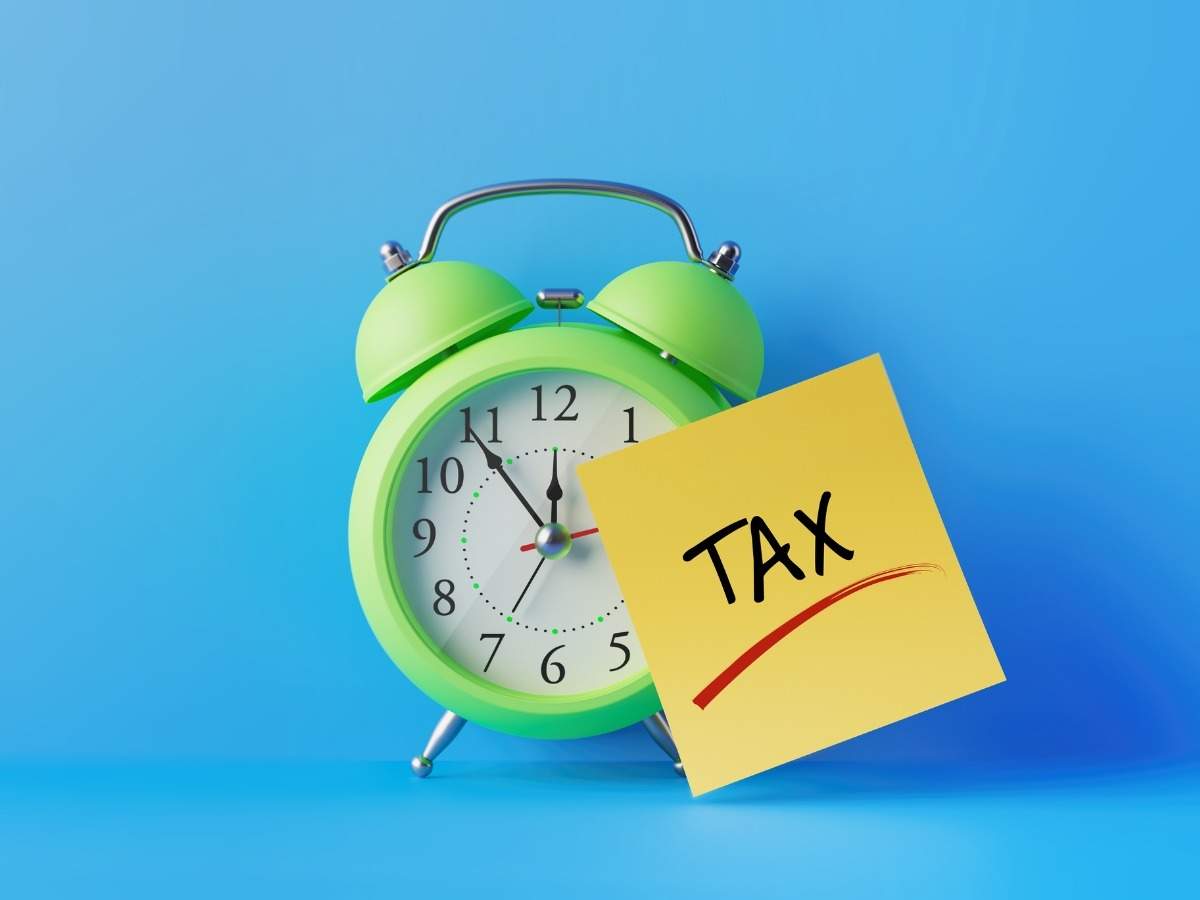Deductions on Section 80C, 80CCC, 80CCD, and 80D: Deductions permitted under the Income tax act while Income Tax e Filing assist you to reduce your taxable income. Only when you have made tax-saving contributions or have incurred qualifying expenses will you use the deductions. Under different sections, there are a variety of deductions available that can carry your taxable income down. Section 80C of Chapter VIA is the most common one. 80D, 80E, 80 G, 80DDB and so on are the other chosen deductions under Chapter VIA. Let us address in this article some of the significant deductions that a taxpayer may claim under chapter VIA.
1. SECTION 80C
Investments Deductions
Under section 80C, you can claim a deduction of Rs. 1.5 lakh from your total income. You can reduce up to Rs 1,50,000 from your overall taxable income in simple terms, and it is valid for individuals and HUFs.
If you paid excess taxes but invested in LIC, PPF, Mediclaim, paid tuition fees for your children, etc. and ignored seeking a deduction for the same, you can do so when filing your return on income tax. The Department of Income Tax will refund in your bank account for the excess money.
2. Section 80C CC
Premium paid on Insurance policies
Deduction for Premium Paid for LIC or Other Insurer Annuity Product.
Section 80CCC provides an individual with a deduction for any amount paid or invested in any LIC or other insurer’s annuity plan. For the receipt of a pension from a fund referred to in Section 10(23AAB), the scheme shall be. In the year of receipt, the pension received from the annuity or from the amount received upon surrender of the annuity, including the interest or bonuses accrued on the annuity, is taxable.
3. Section 80C CD
Deduction for pension plan contribution
a. Contribution of an employee under Section 80C CD (1)
This can be claimed if you deposit your pension into your account. The maximum deduction you can use is 10% of the salary (if the taxpayer is an employee) or 20 % of the total gross income (if the taxpayer is self-employed) or Rs. 1.5 lakh, whichever is lower.
Until FY 2016-17, for self-employed persons, the maximum deduction permitted was 10% of gross total income.
b. Deduction for self-contribution to NPS-section 80CCD (1B) : A new section 80C CD (1B) has been implemented for an additional deduction of up to Rs. 50,000 for the amount deposited by a taxpayer to their NPS account. Atal Pension Yojana ‘s contributions are also eligible.
c. Employer contribution to NPS-Section 80C CD (2) Seek an additional deduction of up to 10% of your income on your employee pension contribution. The monetary limit on this deduction does not exist.
4. Section 80 TTA
Interest received on Saving accounts
For interest on the Savings Bank Account deduction from Gross Total Income.
You can demand a deduction of a maximum of Rs. 10,000 against interest income from your savings account with a bank, cooperative society, or post office if you are an individual or a HUF. Include interest in other income from the savings bank account.
No deduction on interest income from fixed deposits, recurring deposits, or interest income from corporate bonds is eligible under Section 80TTA.
5. Section 80GG
House Rent Paid
House Rent Deduction Paid Where HRA is not received
a. For rent paid when HRA is not received, a deduction under section 80GG is eligible. The taxpayer, spouse or minor child at the place of employment does not own residential accommodation.
b. In no other place does the taxpayer have self-occupied residential property.
c. The taxpayer must stay on rent and pay rent.
d. The deduction is available to all people.
A minimum of the following deductions are available:
a. Rent paid minus 10% of adjusted total income
b. Rs. 5,000/- monthly
c. 25% of total adjusted income *
* Adjusted Gross Gross Total Income is determined if certain deductions, exempt income, long-term capital gains and income attributable to non-residents and foreign companies is adjusted in Gross Total Income.
The deduction available from FY 2016-17 has been raised to Rs. 5,000 a month from Rs. 2,000 a month.
From FY 2016-17 accessible derivation has been raised to Rs 5,000 every month from Rs 2,000.
6.Section 80E
Deduction for Interest on Education Loan for Higher Studies
A deduction for interest on loans taken for pursuing higher education is allowed to an individual. For the taxpayer, spouse or children or for a student for whom the taxpayer is a legal guardian, this loan may have been taken away.
80E is valid for a period of 8 years (starting from the year in which the interest begins to be repaid) or until the full interest is repaid, whichever is earlier. The sum that can be claimed is unlimited.
7. Section 80 EE
Home Loan Interest Deduction
- Home Loan Interest Tax Deductions for First time owners
- FY 2017-18 and FY 2016-17 If the loan has been taken up in FY 2016-17, this deduction is valid in FY 2017-18. The deduction under section 80EE is applicable only to homeowners (individuals) who, on the date of the loan sanction, have only one household property. The property should have a value of less than Rs. 50 lakh and the home loan should have a value of less than Rs. 35 lakh. Between 1 April 2016 and 31 March 2017, the loan taken from a financial institution must have been sanctioned. In addition to the deduction of Rs. 2 lakh (on the interest part of the home loan EMI) permitted under section 24, an additional deduction of Rs. 50,000 is available for your home loan interest.
- FY 2013-14 and FY 2014-15 During these financial years, the first-time house value of Rs. 40 lakh or less was the deduction available under this clause. Only when your loan sum is Rs. 25 lakh or less during this time will you benefit from this. Between 1 April 2013 and 31 March 2014, the loan must be sanctioned. The aggregate deduction allowed under this section does not exceed Rs. 1 lakh and is permissible for FY 2013-14 and 2014-15 respectively.
8. Section 80C CG
Rajiv Gandhi Equity Saving Scheme (RGESS)
A resident individual whose gross total income is less than Rs.12 lakh seems to have a deduction under this section 80C CG. The following criteria should be met in order to benefit from the benefits set out in this section:
a. As per the condition stated under the notified scheme, the assessee should be a new retail investor.
b. In such a listed investor, the investment should be made in compliance with the criteria stated in the notified scheme.
c. In respect of such investment, the minimum lock period shall be three years from the date of acquisition in accordance with the notified scheme.
A deduction which is lower than the following is permissible upon satisfaction of the above conditions.
50% of the amount invested in equity shares; or
Rs 25,000 for three continuous Assessment Years. .
As of 1 April 2017, the Rajiv Gandhi Equity Scheme has been discontinued. Therefore, from FY 2017-18, no deduction under section 80CCG will be allowed. However, if you invested in FY 2016-17 in the RGESS programme, you can demand a deduction until FY 2018-19 under Section 80CCG.
9. Section 80D
Deduction of Medical Insurance Premium paid
Under section 80D on self-insurance, spouse and dependent children, you (as an individual or HUF) can claim a deduction of Rs.25,000. An additional deduction is eligible for parents’ insurance of up to Rs 25,000 if they are under 60 years of age. If the parents are above 60 years of age, the deduction sum is Rs 50,000, which has been increased from Rs 30,000 in Budget 2018.
If both the taxpayer and the parent(s) are 60 years of age or above, the maximum deduction available under this section is up to Rs.1 lakh.
For example, Raj is 65 years of age and his father is 90. The maximum deduction Raj can claim under section 80D is Rs. 100,000 in this case. A cumulative additional deduction of Rs. 5,000 is permitted for preventive health care from FY 2015-16.
10. Section 80DD
Deduction for Rehabilitation of Handicapped Dependent Relative
The deduction in Section 80DD is applicable to a resident or HUF individual and is available at:
a. Expenditure on medical treatment (including nursing), preparation and rehabilitation of individuals with disabilities based on relative care
b. Payment or deposit to a specified program for the care of a dependent relative with disabilities.
i. Fixed deduction of Rs 75,000 if disability is 40 % or more but less than 80 %.
ii. Fixed deduction of Rs 1,25,000 where there is severe disability (disability is 80 % or more).
A certificate from a prescribed medical authority is necessary to claim this deduction. The deduction cap of Rs 50,000 was increased from FY 2015-16 to Rs 75,000 and Rs 1,00,000 was raised to Rs 1,25,000.
11. Section 80DDB
Deduction for Self or Dependent Relative Medical Expenditure
a. Individuals and HUFs below 60 years of age
A deduction of up to Rs.40,000 is available for an individual or a HUF resident. It is available in respect of any expense incurred by himself or any of his dependents for the treatment of specified medical diseases or ailments. For the HUF, such a deduction is available for all of the HUF members with regard to medical expenses incurred in relation to these prescribed illnesses.
b. To the senior and super senior citizens
If the person on behalf of whom such costs are incurred is a senior citizen, a deduction of up to Rs 1 lakh may be claimed by the individual or HUF taxpayer. The deduction that could be claimed for a senior citizen and a super senior citizen was Rs 60,000 respectively and Rs 80,000 until FY 2017-18. This has now become a common deduction available, unlike earlier, up to Rs 1 lakh for all senior citizens (including super senior citizens).
c. For requests for reimbursement
Any reimbursement by the insurer or employer of medical expenses shall be reduced from the amount of deduction which the taxpayer may claim pursuant to this section.
Also, note that in order to assert such a deduction, you need to get a prescription from the doctor concerned with such medical care.
12. Section 80U
Deduction for Person suffering from Physical Disability
A resident individual who suffers from a physical disability (including blindness) or mental retardation has a deduction of Rs.75,000 available. One can claim a deduction of Rs 1,25,000 in the case of serious disability.
From FY 2015-16, the deduction cap of Rs 50,000 was increased to Rs 75,000 under Section 80U and Rs 1,00,000 was raised to Rs 1,25,000.
13. Section 80G
Deductions for donations to social causes
With or without limitation, the different donations listed in u / s 80 G are liable for deduction up to either 100 % or 50 %. As a deduction, any donations made in cash above Rs 2,000 will not be allowed from FY 2017-18. In order to qualify for an 80 G deduction, donations above Rs 2000 should be made in any form other than cash.
a. Donations without any qualifying limit with a 100 %deduction
- Established by the Central Government , the National Defence Fund
- Prime Minister’s National Relief Fund
- The National Foundation for Communal Harmony
- An authorised National Eminence University / Education Institution
- Under the leadership of the Collector of that district, Zila Saksharta Samiti was formed in every district.
- Fund established by the State Government for medical assistance to the poor
- National Illness Assistance Fund
- National Council for Blood Transfusion or Any State Council for Blood Transfusion
- National Trust for the Welfare of People with Autism, Mental Retardation and Various Disabilities, Cerebral Palsy
- National Fund for Sports
- National Fund for Culture
- Technological Development and Application Fund
- National Fund for Children
- Relief Fund of the Chief Minister or Relief Fund of the Lieutenant Governor in respect of any State or Union Territory
- The Central Welfare Fund of the Army or Indian Naval Benevolent Fund or Central Welfare Fund of the Air Force, Cyclone Relief Fund of Andhra Pradesh Chief Minister, 1996
- During October 1, 1993 and October 6,1993, the Maharashtra Chief Minister’s relief fund
- Earthquake Relief Fund of the Chief Minister, Maharashtra
- Any fund established by the Gujarat State Government solely for the relief of victims of the Gujarat earthquake
- Any trust, organisation or fund to which Section 80G(5C) applies for the provision of relief to victims of the Gujarat earthquake (contributions made between 26 January 2001 and 30 September 2001) or to victims of the Gujarat earthquake (contributions made between 26 January 2001 and 30 September 2001)
- Armenia Earthquake Relief Fund of the Prime Minister
- Africa (Public Contributions-India) Fund
- Swachh Bharat Kosh (applicable from the 2014-15 financial year)
- Clean Ganga Fund (applicable as of the 2014-15 financial year)
b. Donations without any qualifying limit with a 50% deduction
- For Jawaharlal Nehru Memorial Fund
- Drought Relief Fund of the Prime Minister
- For Indira Gandhi Memorial Trust
- The Rajiv Gandhi Foundation
c. The following donations are eligible for a 100% deduction, up to 10% of adjusted gross total income.
For the promotion of family planning, government or any authorised local authority, institution or organisation to be used for
Donation by the Company to the Indian Olympic Association or any other notified association or body formed in India to develop sports and games infrastructure in India or to sponsor sports and games in India
d. The following donations are eligible for a 50% deduction, up to 10% of adjusted gross total income.
Any other fund or institution meeting the criteria referred to in Section 80G(5)
For any charitable cause other than the promotion of family planning, government or any local authority to be used
Any authority established in India for the purpose of solving and satisfying the need for housing or the planning, growth or improvement of cities , towns, villages or both.
Any corporation referred to in Section 10(26BB) for the promotion of minority community interests
In order to repair or renovate any temple, mosque, gurudwara, church or other place which is notified.
14. Section 80GGB
Deduction for Contributions made to Political Parties by the Companies
For the amount contributed by it to any political party or electoral trust, Section 80GGB deduction is permitted to an Indian company. Deduction is permitted for any contribution other than cash by any means.
15. Section 80GGC
Deduction on contributions to political parties made by any individual
An individual taxpayer can be allowed to get deductions under section 80GGC for any amount donated to a political party or an electoral trust. It is not available to companies, local authorities and artificial judicial person which are wholly or partially funded by the government. If you pay by some means other than cash could you use this deduction.
16. Segment 80RRB
Deduction in respect of any income by way of a patent royalty
80RRB Deductions for any income by way of royalty for a patent registered on or after 1 April 2003 under the 1970 Patents Act shall be available up to Rs.3 lakh or the income earned, whichever is lower. An individual patentee and a resident of India must be the taxpayer. The taxpayer must have a certificate, duly signed by the prescribed authority, in the prescribed form.
17. Section 80 TTB
Interest deduction on deposits by senior citizens
Vide Budget 2018 has been added to a new section 80TTB in which deductions will be allowed with regard to interest income from deposits held by senior citizens. Rs.50,000 is the limit for this deduction.
No further deduction is required pursuant to section 80TTA. Section 194A of the Act will also be amended in addition to section 80 TTB to raise the threshold limit for TDS on interest income payable to senior citizens. As per the new budget, the earlier limit was Rs 10,000, which was increased to Rs 50,000.





